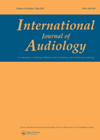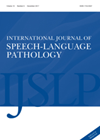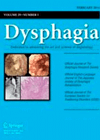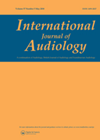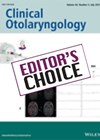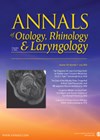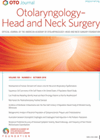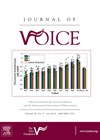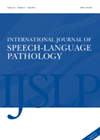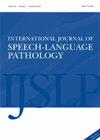
Journal Reviews
The ‘My Hearing Explained’ tool: audiologist and client perceptions
The study notes that the pure tone audiogram has been the primary clinical and counselling tool used by clinicians to assess and describe hearing thresholds to individuals and families since 1922. The Ida Institutes, ‘My Hearing Explained’ tool has become...
Sing it, say it, sort it: singing for Parkinson’s disease
Parkinson’s disease (PD) occurs in 1% of the population aged over 60. Changes in voice and speech are among the earliest and most prevalent symptoms of PD; reduced vocal intensity, monopitch, monoloudness, breathy and hoarse voice quality, imprecise articulation, vocal...
Resolving dysphagia – can we distinguish mild dysphagia from no dysphagia?
Many patients with dysphagia following neurological events can and do experience a resolution of their swallowing difficulties, sometimes without any intervention. However, it is challenging for clinicians to distinguish mild dysphagia from no dysphagia. The question of where to draw...
Assessment of audiological needs
A thorough assessment of audiological needs is crucial for a successful audiological rehabilitation. This study concentrated on creating the Québec Audiological Assessment Protocol for Younger and Older Adults (QAAP-YOA) that could be easily adopted in audiological clinics. The authors used...
Remote consultations: bringing ENT in to the 21st century
The ongoing peaks and troughs of the COVID-19 pandemic have imposed unprecedented challenges on day-to-day healthcare provision that we all took as given across the globe prior to spring 2020! The pandemic has, in many ways, made us push boundaries...
Better or barrier: what do healthcare professionals think about teletherapy?
Most healthcare professionals will have had to dabble in using some kind of telehealth platform over the last 18 months or so. And most of us will have had some reservations, or have colleagues who just weren’t sure about Zoom,...
A new tool for assessing otoscopy skills
Medical and audiology students need to be proficient in performing otoscopy in order to undertake the routine practice required of them at work upon graduation. One significant challenge in teaching otoscopy is the lack of objective and validated assessment tools...
Intraoperative identification of primary tumours in unknown primary head and neck cancer using transoral laser microsurgery with frozen sections
The aim of the study was to compare the sensitivity and specificity of intraoperative identification of primary tumours in patients with unknown primary head and neck squamous cell carcinoma (UP HNSCC) using transoral laser microsurgery (TLM) with frozen sections, with...
A novel scale for the assessment of tracheoesophageal voice quality – the SToPS
There is currently no assessment tool in widespread use that permits a valid and reliable perceptual assessment of voice quality following laryngectomy. Such a scale is needed to investigate the functional outcomes of surgical voice restoration and rehabilitation regimes. Existing...
Socially appropriate part 1: assessing people with TBI
Social communication disorders are one of the most common and yet most under-addressed sequelae of a traumatic brain injury (TBI). Yet speech and language therapists report a lack of assessment tools and a lack of time to fully assess these...
Monitoring the mouth in ALS
Amyotrophic lateral sclerosis (ALS; or motor neurone disease) is characterised by gradual loss of function in the speech muscles resulting in a progressive deterioration in a person’s ability to communicate. The aim of this study was to investigate the use...
Which self-reported tinnitus and hyperacusis questionnaires are useful?
Tinnitus and hyperacusis may have very negative psychological side-effects. Due to their subjective nature it is important to have appropriate tools to assess them. In addition to the routine questionnaires such as THI, HQ, ISI, HADS or VAS, the authors...

